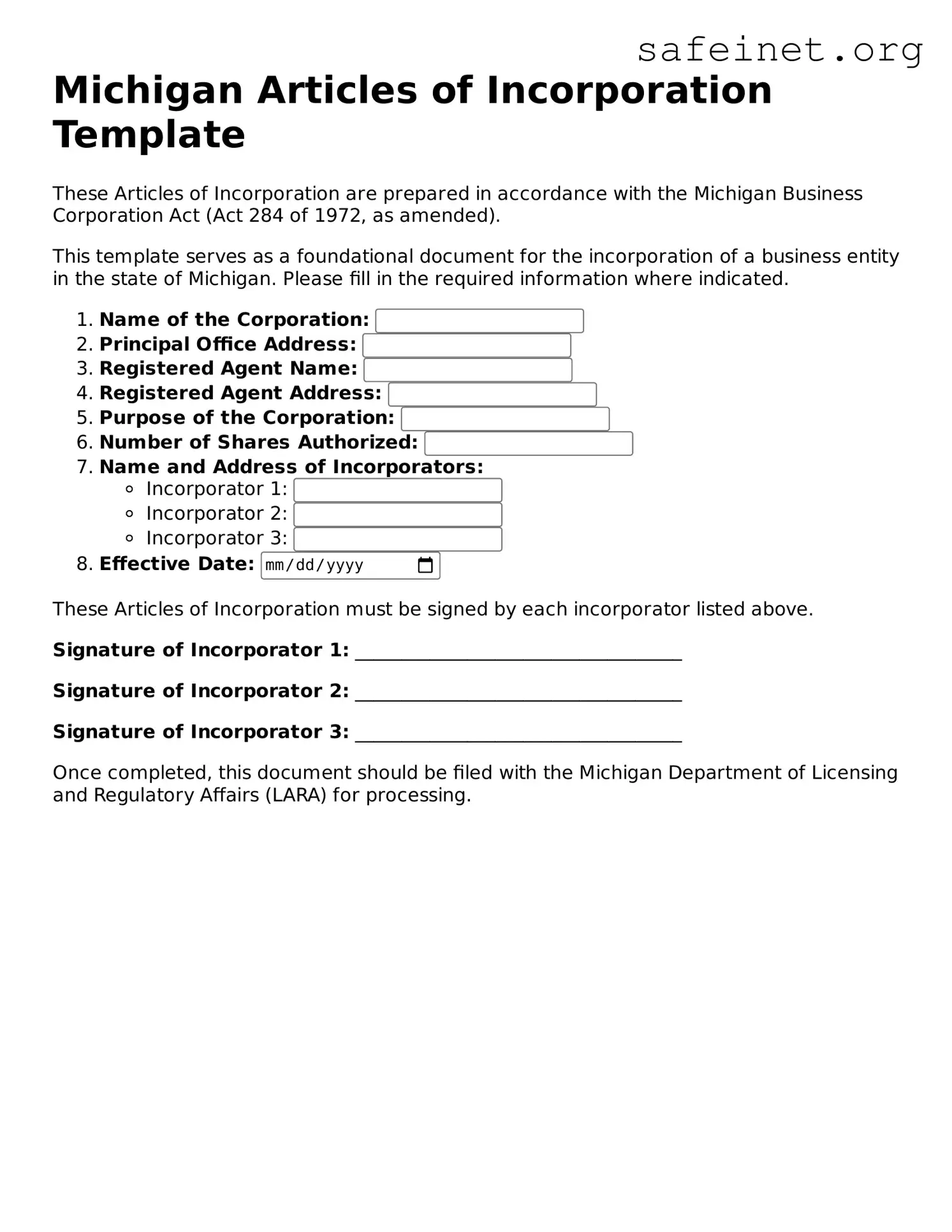The Articles of Incorporation in Michigan, a crucial document for starting a corporation, shares similarities with the Certificate of Incorporation used in various states. Both documents serve the purpose of legally establishing a corporation and outlining essential information such as the company’s name, address, and purpose. In addition, both documents often require information about the directors and registered agent, along with other particulars required by state law. While the terms may differ by state, the fundamental role of facilitating business formation remains consistent.
The Bylaws document also relates closely to the Articles of Incorporation. Bylaws function as the internal rules and procedures that govern how a corporation operates. While the Articles of Incorporation are filed with the state and publicly accessible, Bylaws remain an internal document, shaping the organization’s structure and detailing responsibilities. Both documents are essential for corporate governance but address different aspects of the corporate existence.
The Limited Liability Company (LLC) Articles of Organization document serves a similar purpose for LLCs. Like the Articles of Incorporation, it establishes a legal entity and requires information about the business’s name, address, and ownership structure. Furthermore, both documents aim to provide liability protection and delineate the parameters under which the business operates, albeit for different types of business entities.
The Partnership Agreement, while distinct from the Articles of Incorporation, serves a similar foundational purpose for partnerships. This document outlines terms regarding the partnership’s operations, responsibilities, profits, and decision-making. While the Articles are filed with the state for corporations, the Partnership Agreement is usually a private contract among partners, outlining how they will work together to run the business.
The Certificate of Good Standing is another relevant document. This certificate, obtained after filing the Articles of Incorporation, verifies that a corporation complies with state regulations and is authorized to conduct business. While the Articles introduce the entity, the Certificate of Good Standing assures third parties that the business is recognized and legally operational within the state.
The Assumed Name Certificate, also known as a DBA (Doing Business As), aligns with the Articles of Incorporation in that it allows businesses to operate under a name other than their legal name. This certificate ensures that the chosen name is registered and does not conflict with existing business entities. While forming a corporation, filing the Articles establishes the legal name, while the DBA allows for flexibility in branding and operations.
The Corporate Resolution is another document that may relate closely to the Articles of Incorporation. This document outlines decisions made by the board of directors or shareholders and is essential for corporate governance. While incorporation documents focus on establishing the business, the Corporate Resolution facilitates ongoing operations and decision-making processes necessary for running the company effectively.
The Annual Report is similar in nature as well. Once a corporation is formed via the Articles of Incorporation, it is required to maintain ongoing compliance with state regulations through periodic Annual Reports. These reports provide updated information about the company’s status, financial health, and any changes in structure. While the Articles of Incorporation mark the beginning of a corporation, the Annual Report represents ongoing accountability and transparency in business operations.
Finally, the Shareholder Agreement bears a resemblance due to its focus on the rights and responsibilities of shareholders. This document governs the relationship between the shareholders and defines how shares are transferred, voted on, and managed. Like the Articles of Incorporation, the Shareholder Agreement plays a crucial role in the operation of a corporation and helps to outline the operational framework regarding ownership.
